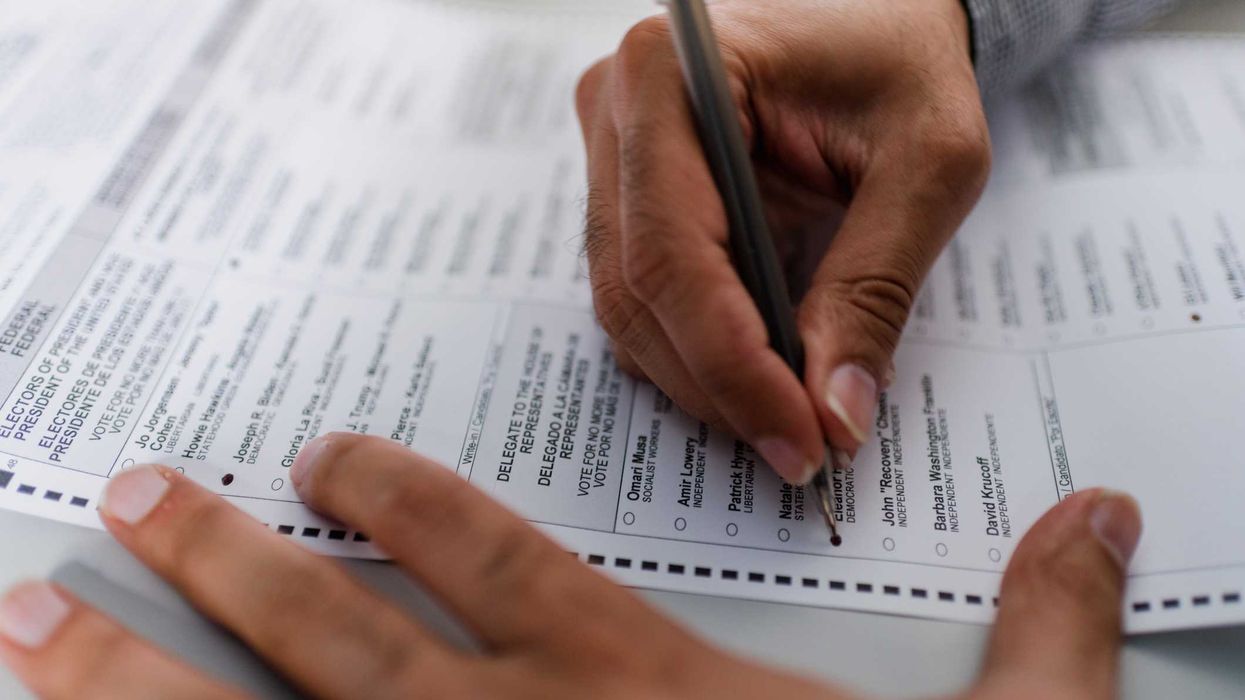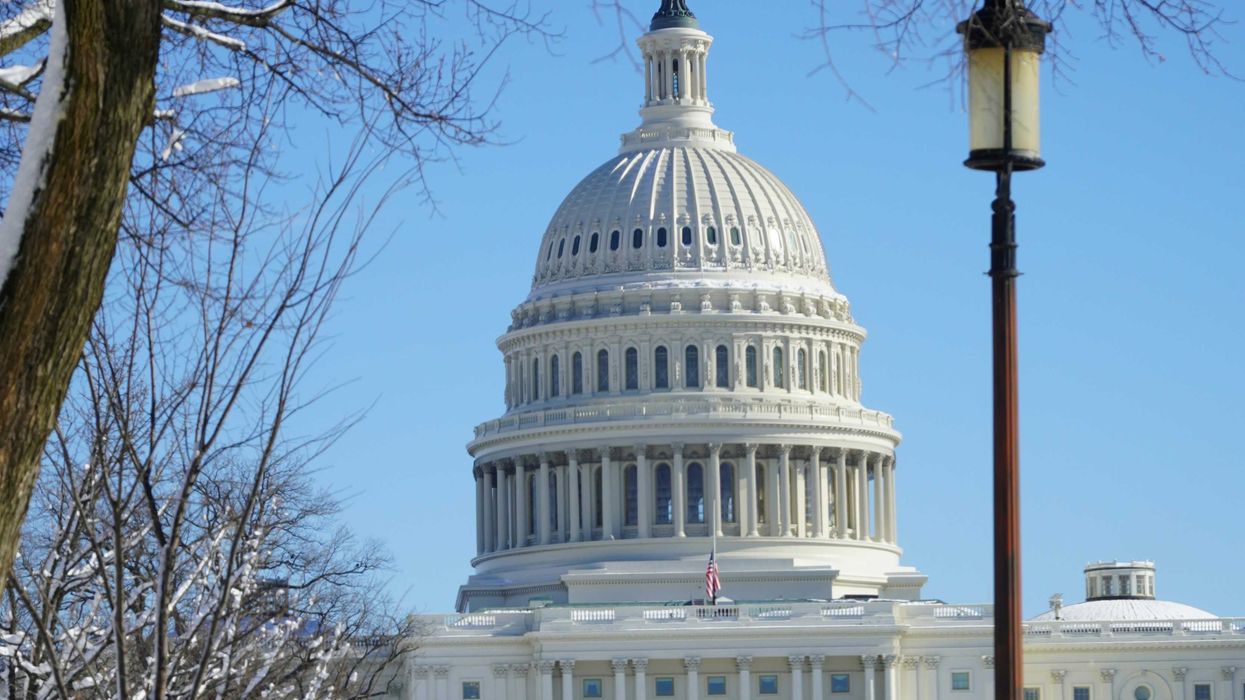In the wake of former President Donald Trump’s re-election to the White House and the surprising margins of his victory, reckonings abound — not just for the Democratic Party, the future of identity politics, celebrity culture, and elites, but also for a newer faction: the pro-democracy community.
The pro-democracy community, nebulously defined as it is, has been growing, especially since Trump’s first victory in 2016. Its goals intend to be nonpartisan, and focus on strengthening civic participation, reforming democratic institutions, and improving civic culture. Examples of field members include organizations promoting civics education, those advocating for ranked-choice voting, and those attempting to address polarization through bridge-building initiatives — all vital cogs in an American democracy that needs repair.
Yet today, this pro-democracy movement desperately needs to reassess its strategies and tactics. A vision of strengthening and revitalizing the nation’s civic fabric remains essential, regardless of who wins the presidential election. However, the popular vote seems to indicate that the majority of American voters repudiated the Democratic message that Trump is a threat to democracy at best and a potential dictator at worst.
I joined the pro-democracy ranks when I co-founded a civics education nonprofit in 2009, Generation Citizen. The organization aimed to foster active and engaged citizens by re-embedding civics education in the K-12 school curriculum, but it was incredibly difficult to get anyone to take us seriously for the first seven years. One prominent education leader told me that our best strategy would be to get students to focus on international issues — that democracy was secure and stable state-side. So went the orthodoxy with President Obama at the helm.
Everything changed in 2016. All of a sudden, civics education was the most popular intervention in town; our budget grew from just under $1 million to over $4 million in a year, and funders pushed us to expand into rural communities. Simultaneously, the pro-democracy community gained traction. Funders and organizations recognized that an American democracy we took for granted might be eroding and that investing in a more-engaged citizenry could lead to the end of Trump and his politics. But the reasoning warrants reflection: The foundations of democracy were weakening long before Trump’s election, and the fact that it took his election to bolster the community suggests that the community is more invested in preventing Trump’s power than deepening civic culture and institutions.
I moved on from Generation Citizen at the end of 2020, proud of my leadership, but tired and burnt out. I wanted to successfully transition the organization to new leadership and engage in new kinds of democracy work. I landed at the Stavros Niarchos Foundation Agora Institute at Johns Hopkins University, a center dedicated to strengthening global democracy through powerful civic engagement and informed, inclusive dialogue. In early 2022, I organized a bipartisan, off-the-record convening of democracy advocates, eager to determine what was and wasn’t working in the sector. While the conversation was candid, and led to future collaboration, several participants later shared the same explicit feedback: The room was about 90 percent progressive, and if we were serious about revitalizing democracy, we needed more conservative voices.
With that perspective in hand, I collaborated with the center-right think tank R Street Institute to design a conservative agenda for democracy initiative. Over the next two years, we convened hundreds of Republicans across the United States with the aim of strengthening democratic institutions in the long-term, and exploring ways to rebuild trust in elections as a short-term goal.
Many people on the opposite side of the political spectrum reacted with shock (“Pro-democracy conservatives exist?”) and judgment (“You’re working with Republicans?”), but the project has been both rewarding and important. I traveled across purple states like Wisconsin, Arizona, and Georgia, and deep-red states like Wyoming, Idaho, and Kansas, and learned from Republicans who were worried about the state of the republic, who believed that Joe Biden won the 2020 election, and who were still proudly conservative in their political ideology, if worried about the state of their party. I continue to believe that a true, functioning democracy requires functional political parties and that the Republicans I met are essential to making that happen.
Today, rather than pursuing the same anti-Trump agenda that motivated the pro-democracy community in 2016, the community needs to reckon with the fact that Trump, his policies, and his rhetoric, have not been repudiated, but rather, embraced by many. To that end, it’s imperative that the field approaches its work with deep humility and introspection. In that spirit and without presuming to have the answers, here are four recommendations I believe can aid the process and ultimately yield better results.
1. Listen before acting. This may seem trite in the aftermath of the election, but the pro-democracy community needs to wake up to the fact that its strategy isn’t working. Yes, many young people are receiving civics education, many Americans are participating in efforts to reduce polarization, and many communities are working together to solve problems at the local level. But election denialism endures on both sides of the aisle, polarization is deepening, and institutional trust continues to plummet.
In 2016, numerous new organizations devoted to safeguarding democratic guardrails, convincing Americans to run for office, and advocating for electoral reform popped up to address an explicit challenge: Trump. This time around, the challenge is trickier: Americans are demonstrating a lack of faith in democracy. Rather than leaping to action and creating siloed solutions, we need to stop and listen to people on the ground. We should attempt to really understand how people from all political ideologies are currently thinking about democracy rather than quickly designing solutions.
2. Call balls and strikes. Because former President Trump is a Republican, and he and his party have objectively led the most outlandish challenges against democratic norms, opponents are naturally inclined to align with the Democratic Party. President Joe Biden’s declaration that “ democracy is on the ballot,” which Democrats around the United States echoed, made this explicit.
Yet to maintain and grow its credibility, the pro-democracy community can’t fully align with the Democratic Party. Indeed, without casting an equivalency to denying election results and inciting insurrections, the Democratic Party has engaged in its fair share of questionable behavior.
It is incumbent on the pro-democracy community to call out whenever behavior and rhetoric violates democratic norms, irrespective of which political party is involved. For example, in 2021, President Biden called Georgia elections bill, SB 202, “Jim Crow 2.0” because of its voter suppression goals. Evidence shows that the bill has led to increased turnout and trust, with 98.9% of voters in the 2022 midterm elections reporting no issues casting a ballot, and 95.3% reporting a wait time of less than 30 minutes. Meanwhile, across the country, Democrats have propped up election-denying candidates in primaries in an effort to give their candidates a better shot in the general election. The pro-democracy community should have called out the irresponsible rhetoric surrounding the Georgia bill, and it should criticize Democrats for engaging in electioneering counter to basic democratic principles.
Calling out the violation of constitutional norms that threaten American democracy will remain important in the new Trump era, but it will be critical for the community to distinguish between potentially harmful policies and actions that actually do curtail these norms. This will be incredibly challenging. But there is a difference between massive deportations, which are by all accounts legal, and ending birthright citizenship, which wouldn’t be constitutional. The pro-democracy community needs to be careful about when it is associating policies it doesn’t like with democracy, as opposed to behavior that actually challenges democratic principles.
3. Diversify the ranks. Along similar lines, the progressive bent of the pro-democracy community has contributed to an excessive amount of group-think, with like-minded organizations talking to each other about ways to address the lack of faith in democracy among individuals with whom they rarely interact. For example, it often relies on research and polling to explore the best ways to talk to conservatives about democracy issues.
The doctrine that organizations shouldn’t design interventions without involving the people impacted by them is foundational to international development. Yet when it comes to US democracy, organizations are often attempting to persuade people who are less trusting of democracy without actually engaging with them.
It may be uncomfortable, but the pro-democracy community needs to diversify its ranks to include conservatives and individuals who cast their vote for Trump.
4. Get local. The most impactful way to engage with politics is at the local level. But unfortunately, the local has become national. Too many in the pro-democracy community focus all of their work on the federal level, without engaging at the state and city level.
Whereas it can seem like the federal space can be a depressing partisan morass, there’s exciting work happening at the local level. Organizations like the Trust for Civic Life are finding and funding work to connect individuals and civic infrastructure in the Appalachian region of Kentucky, allowing them to collectively rebuild after the 2022 area floods, and building civic agriculture in northern Michigan . The city of Bend, Oregon has engaged in a citizen assembly to explore community approaches to addressing homelessness, and cities like Boston are using participatory budgeting to allow citizen input into how to spend public dollars. Democracy is being renewed and reinvigorated at the local level.
To say that the solution to America’s problems lie in its communities is cliché. But one way for advocates to address challenges to democracy is to organize and get involved in local politics themselves. The process can bring both a sense of perspective and a needed respite from national work.
While these approaches aren’t solutions in their own right, they provide some starting points for effective action. My hope is that the pro-democracy community can meet this unprecedented moment with humility and introspection, rather than silver bullet solutions. The 2016 playbook won’t work in 2024. It’s time to listen first.
Warren is a fellow at the SNF Agora Institute at Johns Hopkins University. He is co-leading a trans-partisan effort to protect the basic parameters, rules, and institutions of the American republic, and is the co-founder of Generation Citizen, a national civics education organization.
This article was first published in the Stanford Social Innovation Review. Read the original article.



















